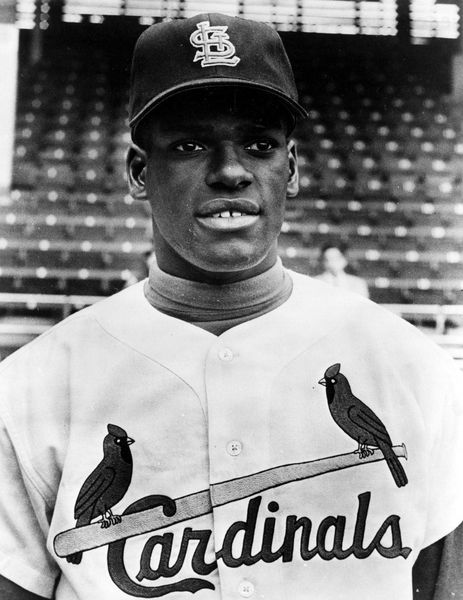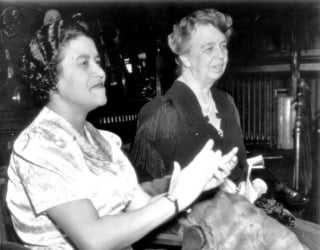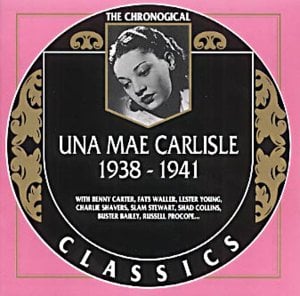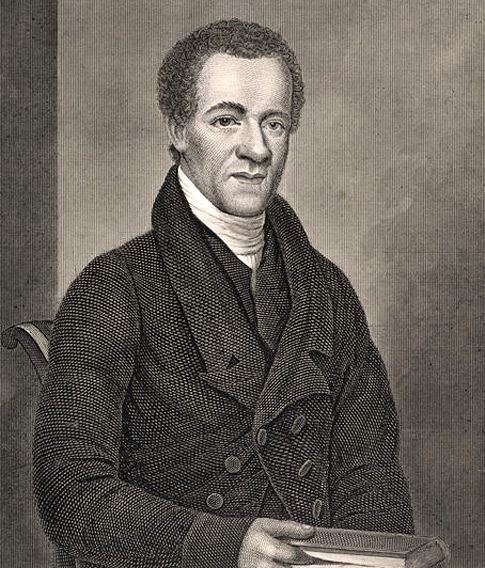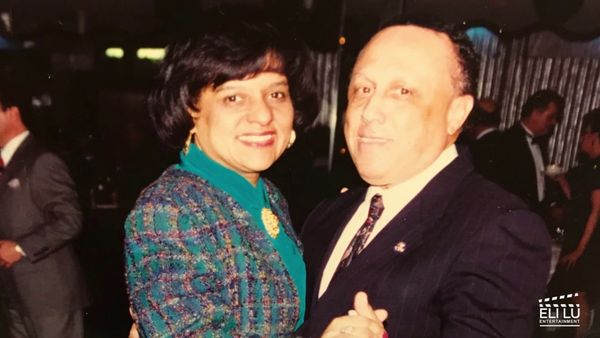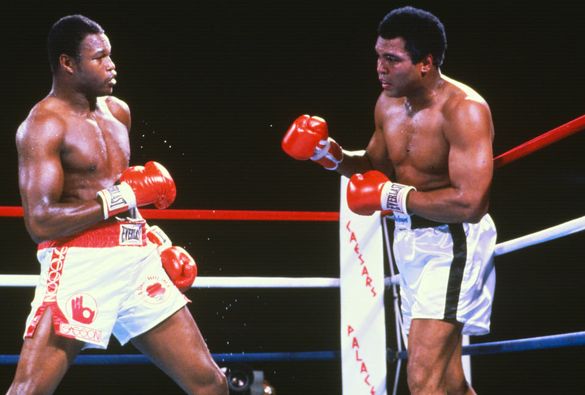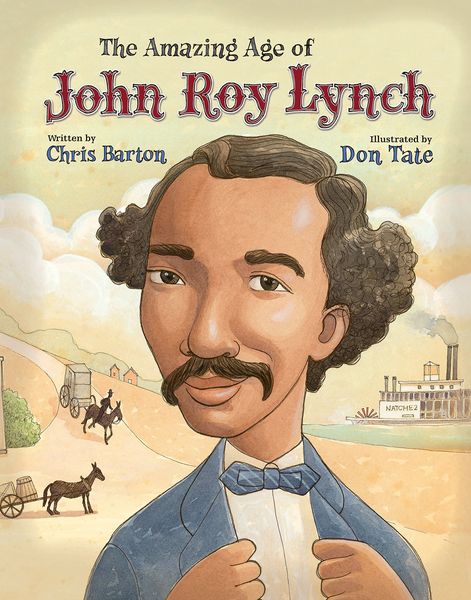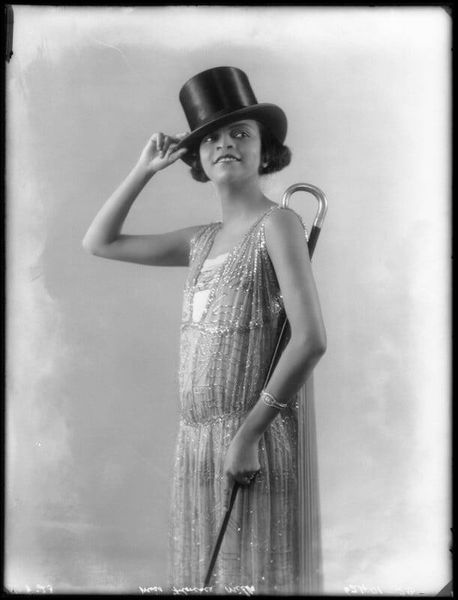GM – FBF – Today’s American Champion event was The Wilmington insurrection of 1898, also known as the Wilmington massacre of 1898 or the Wilmington coup of 1898, occurred in Wilmington, North Carolina, on Thursday, November 10, 1898.It is considered a turning point in post-Reconstruction North Carolina politics. The event initiated an era of more severe racial segregation and effective disenfranchisement of African Americans throughout the South, a shift already underway since passage by Mississippi of a new constitution in 1890, raising barriers to voter registration. Laura Edwards wrote in Democracy Betrayed (2000):”What happened in Wilmington became an affirmation of white supremacy not just in that one city, but in the South and in the nation as a whole”, as it affirmed that invoking “whiteness” eclipsed the legal citizenship, individual rights, and equal protection under the law that blacks were guaranteed under the Fourteenth Amendment.The white press in Wilmington originally described the event as a race riot caused by blacks. However, over time, with more facts publicized, the event has come to be seen as a coup d’état, the violent overthrow of a duly elected government, by a group of white supremacists. Multiple causes brought it about. It is claimed to be the only such incident in American history, (other late Reconstruction Era violence did not result in a direct ‘coup’ or removal and replacement of elected officials by unelected individuals).The coup occurred after the state’s white Southern Democrats conspired and led a mob of 2,000 white men to overthrow the legitimately elected local Fusionist government. They expelled opposition black and white political leaders from the city, destroyed the property and businesses of black citizens built up since the Civil War, including the only black newspaper in the city, and killed an estimated 60 to more than 300 people.Today in our History, November 10, 1898 – white supremacists murdered African Americans in Wilmington, North Carolina and deposed the elected Reconstruction era government in a coup d’etat.It was the morning of November 10, 1898, in Wilmington, North Carolina, and the fire was the beginning of an assault that took place seven blocks east of the Cape Fear River, about 10 miles inland from the Atlantic Ocean. By sundown, [Alex] Manly’s newspaper [The Daily Record] had been torched, as many as 60 people had been murdered, and the local government that was elected two days prior had been overthrown and replaced by white supremacists.For all the violent moments in United States history, the mob’s gruesome attack was unique: It was the only coup d’état ever to take place on American soil.Lost in the fire that destroyed The Daily Record were the lives of Black citizens and the spirit of a thriving Black community, and also the most promising effort in the South to build racial solidarity. — Adrienne LaFrance and Vann Newkirk in The Lost History of an American Coup D’ÉtatBefore the violence, this port city on the Cape Fear River was remarkably integrated. Three out of the ten aldermen were African Americans, and Black people worked as policemen, firemen, and magistrates.Democrats, the party of the Confederacy, vowed to end this “Negro domination” in the 1898 state legislative elections. Their strategy was to enlist men who could write (white journalists and cartoonists), men who could speak (white supremacists who whipped up emotions at rallies), and men who could ride (the Ku Klux Klan-like “Red Shirts” who were basically armed ruffians on horseback).Alex Manly, editor. Source: UNC-Chapel Hill.The white supremacists used an editorial by Alex Manly, the editor of Wilmington’s Black newspaper the Daily Record, to stir a firestorm at the time of the elections. The editorial responded to a speech by a Georgia socialite who promoted lynching as a method “to protect woman’s dearest possession from the ravening human beast.”Manly condemned lynching and pointed out the hypocrisy of describing Black men as “big burly, black brute(s)” when in reality it was white men who regularly raped Black women with impunity. He added that some relations between the races were consensual.White supremacist rallies kept white outrage at the editorial at a fever pitch. Former Confederate colonel Alfred Waddell gave a speech suggesting that white citizens should “choke the Cape Fear (River) with carcasses” if necessary to keep African Americans from the polls.On election day, the Red Shirts patrolled Black neighborhoods with guns. Democrats won every seat, but these were state legislative seats. African Americans still maintained power in Wilmington’s city government.Some 800 white citizens led by Waddell met at the county courthouse and produced the “White Declaration of Independence” which stated: “We, the undersigned citizens… do hereby declare that we will no longer be ruled, and will never again be ruled by men of African origin.”The following day — Nov. 10 — Waddell led a mob of 2,000 armed men to the Daily Record and burned the building to the ground.Armed rioters in front of destroyed press building.Rumors tore through the Black neighborhoods. The tinderbox ignited at the corner of Fourth and Harnett, where African Americans at Walker’s Grocery Store faced off against white men at Brunje’s saloon. A shot was fired and someone yelled, “White man killed.”Gunfire erupted. Unarmed Black men scattered in all directions and were gunned down. Violence quickly spread. The Wilmington Light Infantry, the White Government Union, and the Red Shirts poured into the Black neighborhoods with rifles, revolvers, and a Gatling gun.Wilmington Light Infantry machine gun crew.As bullets were still flying, Waddell threw out the democratically-elected aldermen and installed his own. This was nothing less than a coup d’état. The hand-picked men “elected” Waddell mayor. Many Black leaders were jailed “for their own safety” and then forcibly marched to the train station under military escort and sent out of town.After the riot, thousands of Black citizens fled. In 1900, the North Carolina legislature effectively stripped African Americans of the vote through the grandfather clause and ushered in the worst of the Jim Crow laws. Research more about this great American tragedy and share it with your babies. Make it a champion day!
Month: November 2020
GM – FBF – Today’s American Champion was an American professional baseball pitcher who played 17 seasons in Major League Baseball (MLB) for the St. Louis Cardinals (1959–1975).
GM – FBF – Today’s American Champion was an American professional baseball pitcher who played 17 seasons in Major League Baseball (MLB) for the St. Louis Cardinals (1959–1975). Nicknamed “Gibby” and “Hoot” (after actor Hoot Gibson), Gibson tallied 251 wins, 3,117 strikeouts, and a 2.91 earned run average (ERA) during his career. A nine-time All-Star and two-time World Series champion, he won two Cy Young Awards and the 1968 National League (NL) Most Valuable Player (MVP) Award. Known for a fiercely competitive nature and for intimidating opposing batters, he was elected in 1981 to the Baseball Hall of Fame in his first year of eligibility. The Cardinals retired his uniform number 45 in September 1975 and inducted him into the team Hall of Fame in 2014.Born in Omaha, Nebraska, Gibson overcame childhood illness to excel in youth sports, particularly basketball and baseball. After briefly playing under contract to both the Harlem Globetrotters basketball team and the St. Louis Cardinals organization, Gibson decided to continue playing only baseball professionally.He became a full-time starting pitcher in July 1961 and earned his first All-Star appearance in 1962. Gibson won 2 of 3 games he pitched in the 1964 World Series, then won 20 games in a season for the first time in 1965. Gibson also pitched three complete game victories in the 1967 World Series.The pinnacle of Gibson’s career was 1968, when he posted a 1.12 ERA for the season and then recorded 17 strikeouts in Game 1 of the 1968 World Series. Gibson threw a no-hitter in 1971 but began experiencing swelling in his knee in subsequent seasons. At the time of his retirement in 1978, Gibson ranked second only to Walter Johnson among major league pitchers in career strikeouts.After retiring as a player in 1975, Gibson later served as pitching coach for his former teammate Joe Torre. At one time a special instructor coach for the St. Louis Cardinals, Gibson was later selected for the Major League Baseball All-Century Team in 1999. Gibson was the author of the memoir Pitch by Pitch, with Lonnie Wheeler. Gibson died of pancreatic cancer on October 2, 2020, exactly 52 years after his memorable 1968 World Series Game 1 performance in which he struck out 17 Detroit Tigers.Today in our History – Robert Gibson (born Pack Robert Gibson; November 9, 1935 – October 2, 2020).Bob Gibson may well have been the most intimidating pitcher in history. He was certainly one of the most successful. The Omaha, Neb., native excelled at baseball and basketball in high school, and played college hoops for Creighton University before a brief stint with the Harlem Globetrotters. In 1957, he signed with the Cardinals and made his big league debut in 1959.A 15-game winner by 1962, Gibson began to take flight soon after. He won 18 games in 1963, and 19 in the Cardinals’ pennant winning season of 1964, when he went 9-2 in his final 11 starts down the stretch to lead the Redbirds. In the World Series against the Yankees, he went 2-1, winning Game 5 at Yankee Stadium and then Game 7 at home on two days rest. He was named World Series MVP.He was a 20-game winner in 1965 and ’66, winning the first of nine consecutive Gold Gloves Awards in ’65. A broken ankle in July of 1967 slowed him down to a 13-7 record, including three wins late in the season to help the Cards clinch another pennant. He went 3-0 with an ERA of 1.00 in the Cardinals’ victory over the Red Sox, winning Games 1, 4, and 7 and picking up his second World Series MVP Award.The 1968 season has come to be known as “The Year of the Pitcher,” and Bob Gibson was certainly the pitcher of the year. He went 22-9 with a sparkling ERA of 1.12 to go along with 268 strikeouts, 13 shutouts, 15 consecutive wins and a stretch of 95 innings in which he gave up just two runs. He was again 2-1 in the World Series, beating the Tigers in Games 1 and 4 before going the distance in a Game 7 loss.Gibson brought home both the 1968 Cy Young Award and the NL Most Valuable Player Awards, and, in the ultimate compliment, baseball lowered the mound the following season, because pitchers, led by Gibson, were dominating hitters and games were historically low-scoring.Gibson earned a second Cy Young Award in 1970, and pitched a no-hitter against the Pirates in 1971. Injuries were beginning to take their toll, however, and Gibson wound down with double figure victory totals in 1973 and ’74 before retiring in 1975. Gibson’s 17 years with the Cardinals netted 251 victories, 3,117 strikeouts, 56 shutouts and an ERA of 2.91. He later served as a pitching coach for the Mets, Braves, and Cardinals. He was elected to the Hall of Fame in 1981, and the MLB All-Century Team in 1999.Joe Torre, Gibson’s teammate from 1969-’75 and a sometime battery mate, said: “Pride, intensity, talent, respect, dedication. You need them all to describe Bob Gibson.”Gibson passed away on Oct.2, 2020. Research more about this great American Champion and share it with your babies. Make it a champion day!
GM –FBF – Today’s American Champions was a civil rights activist, social worker, race relations specialist, and the first female African American state legislator elected in the United States, based in Philadelphia, Pennsylvania.
GM –FBF – Today’s American Champions was a civil rights activist, social worker, race relations specialist, and the first female African American state legislator elected in the United States, based in Philadelphia, Pennsylvania.Born in Maryland and raised in Boston, she started her professional career as a public school teacher in Boston. She would then go onto work for the Young Women’s Christian Association, and then with the American Friends Service Committee. In 1935, she became assistant to the director of Philadelphia’s Works Progress Administration and also began politically organizing for the Democratic National Committee.In 1938, she was elected to the Pennsylvania state legislature. She served for a year as a state representative in which she introduced nine bills and three amendments on issues ranging from affordable housing projects to fair employment legislation.During the Roosevelt administration, she was appointed to the Office of Civilian Defense on October 20, 1941, and worked as a race relations advisor. In 1944, she broke away from the Democratic Party and publicly supported the Republican presidential candidate. In her later years, she turned to global issues and helped found the United Nations Council of Philadelphia, later known as the World Affairs Council.Today in our History – November 8, 1938 – Crystal Bird Fauset becomes the 1st black woman elected to a state legislature in the U.S. acquiring this distinction by being named to the Pennsylvania House of Representatives.Crystal Bird Fauset, the first African-American female state legislators in the United States, was born on June 27, 1894 in Princess Anne, Maryland. She grew up in Boston, Massachusetts but spent most of her adult and political life in Philadelphia, Pennsylvania. Between 1914 and 1918 Fauset worked as a public school teacher in Philadelphia.In 1918 she began working as a field secretary for African American girls in the Young Women’s Christian Association (YWCA), a job she held until 1926. In 1925 the Interracial Section of the American Friends Service Committee (AFSC or Quakers) was formed and Fauset joined the organization in 1926, wanting, as she said, to work on her interest “in having people of other racial groups understand the humanness of the Negro wherever he is found.”Between September 1927 and September 1928 she made 210 appearances before more than 40,000 people for the AFSC. During the late 1920’s Fauset studied at Teacher’s College, Columbia University, graduating in 1931.In 1932 Fauset founded the Colored Women’s Activities Club for the Democratic National Committee where she helped African American women register to vote. In response to her efforts the Roosevelt Administration appointed her Director of the Women and Professional Project in the Works Progress Administration (WPA) in Philadelphia. In 1935 she also served on the Federal Housing Advisory Board.That same year Crystal Bird married sociologist and political thinker Arthur Fauset and they became a dynamic political couple. Fauset then began to work on the Joint Committee on Race Relations of the Arch and Race Streets (Quaker) Yearly Meetings where she helped establish the famous Swarthmore College Institute of Race Relations which documented employment and housing discrimination against Pennsylvania African Americans.In 1938 Fauset was elected to the Pennsylvania State Legislature, representing the 18th District of Philadelphia, which was 66% white at that time. As a state representative Fauset introduced nine bills and three amendments on issues concerning improvements in public health, housing for the poor, public relief, and supporting women’s rights in the workplace.In 1941 Fauset’s friendship with First Lady Eleanor Roosevelt helped her secure a position as assistant director and race relations director of the Office of Civil Defense, becoming part of President Roosevelt’s “Black Cabinet” and promoting civil defense planning in black communities, recruitment of blacks in the military, and dealing with complaints about racial discrimination.In 1944, disappointed by the Democratic Party’s failure to advance civil rights, Fauset switched to the Republican Party and later became a member of the Republican National Committee’s division on Negro Affairs.After World War II Fauset turned her attentions to a more global forum, helping to found the United Nations Council of Philadelphia, which later became the World Affairs Council. Throughout the 1950s she travelled to Africa, India, and the Middle East to meet and support independence leaders. Fauset died on March 27, 1965 in Philadelphia. Research more about this great American Champion and share it with your babies. Make it a champion day!
GM – FBF – Today’s American Champion was a pianist and singer during the 1930s and 1940s, auditioned for the Cotton Club, performed solo, and recorded in Europe.
GM – FBF – Today’s American Champion was a pianist and singer during the 1930s and 1940s, auditioned for the Cotton Club, performed solo, and recorded in Europe. Born on December 26, 1915, to American Indian and black parents, she started singing at the age of three in her hometown of Xenia, Ohio.Today in our History November 7, 1956 – Una Mae Carlisle dies.Una Mae Carlisle was a popular jazz singer, pianist, and songwriter in the 1930s and 1940s. With hits like “Walking By The River”, “I Like It, Because I Love It”, “Don’t Try Your Jive On Me” and “Hangover Blues”. She might have become one of the greatest jazz entertainers if it wasn’t for failing health that affected her throughout her career and cut her life short. Her coy jiving style fascinated many and won the hearts of many. Una Mae Carlisle was born on December 26, 1915, in Xenia, Ohio. She started singing at the age of 3. She worked at various radio stations. It was at that time; she was “discovered” by Fats Waller late in 1932. He invited her to play on his radio show at station WLW in Cincinnati during Christmas week when Una Mae turned seventeen. He also asked her to play in his band. She was still in High School at the time, and her mother had approved her Christmas vacation in Cincinnati because she was to stay with her elder sister. When her vacation was over, she refused to return home, becoming a professional musician working with Waller at WLW. Fats’ contract with WLW expired in 1934 and he left Cincinnati for New York.Una Mae left America in 1936 to tour Europe, reportedly with the revue Blackbirds of 1936 and spent the next three years there, mostly in London and Paris. In London, on May 20, 1938, she recorded three discs that were released on the Vocalion label, including Don’t Try Your Jive On Me. Her backing band for that session included the expert West Indian musicians Dave Wilkins (trumpet) and Bertie King (clarinet and tenor sax). She became highly successful in England, Germany and France, where she worked at the Boeuf sur le Toit (“The Ox on the Roof”), a cabaret in the Rue du Colisée in Paris [named for the 1920 one-act farce by Jean Cocteau, scored by Darius Milhaud with themes based on Brazilian dance rhythms – a pantomime involving a boxer, a dwarf, a bookie, a woman in a red evening gown, a policeman who gets beheaded and is later revived and a noisy bar full of people]. While in Paris in 1939, she was one of two pianists in a combo headed by clarinetist Danny Polo (Danny Polo And His Swing Stars) which recorded four sides for Decca.She then returned to New York where she undertook several successful engagements and record dates, the first of which was a session with Fats Waller in November 1939 for Bluebird in which she and Fats combined to sing I Can’t Give You Anything But Love. She began recording on her own for Bluebird in the summer of 1940. She soon had several hits, including Walkin’ By The River with Benny Carter; Blitzkrieg Baby with Lester Young; and I See a Million People with Charlie Shavers and John Kirby. In 1941 she recorded with John Kirby and was nominal leader of several small bands, which featured such leading jazzmen as Russell Procope, Charlie Shavers, Ray Nance, Lester Young and Benny Carter. As early as 1938 Una Mae began suffering with mastoid trouble and in 1941 she was hospitalized for several weeks to treat this condition.Also in the early ’40s she became popular on radio and, before the decade was out, she had successfully transferred to television. Bluebird dropped her from its roster during the 1942-1944 American Federation of Musicians ban on recording (the “Petrillo Ban”), so she signed with Joe Davis for whom she recorded more than a dozen tracks, one of which was ‘Tain’t Yours with ace trumpeter Ray Nance, who had just left Duke Ellington’s band.In between bouts of ill health, she played clubs and hotels and appeared on radio shows, including a week-long salute to Fats Waller on WNEW in New York in February of 1945, approximately a year after his death. In the early ’50s she was still popular, playing with artists such as Don Redman, but her health was failing and she retired in 1954. Her career kept going into the 1950s when she became involved in films and her own radio and television shows. Her last studio session was for Columbia in New York on May 8, 1950. She retired due to her illness in 1954 and died in New York on November 7, 1956. Carlisle sang in a husky, intimate manner, and her warm sensual voice and use of delayed phrasing proved to be as effective on swing numbers as it was on ballads. Research more about this great American Champion and share it with your babies. Make it a champion day!
GM – FBF – Today’s American champion was as an American Presbyterian minister, abolitionist, publisher, and journalist.
GM – FBF – Today’s American champion was as an American Presbyterian minister, abolitionist, publisher, and journalist. He was a leader in New York City’s small free black community, where he organized the first congregation of black Presbyterians in New York. In 1827 he became one of two editors of the newly founded Freedom’s Journal, the first black newspaper in the United States. In 1833 he was a founding member of the interracial American Anti-Slavery Society.Today in our History – November 6, 1858 – Samuel Eli Cornish dies.Abolitionist and newspaper editor Samuel Eli Cornish was born of free parents in Sussex County, Delaware, and raised in Philadelphia and New York City. He graduated from the Free African School in Philadelphia. Shortly thereafter he began training for the ministry under John Gloucester, pastor of the First African Church, Presbyterian, in Philadelphia. Licensed to preach as a Presbyterian minister in 1819, Cornish spent six months serving as a missionary to slaves on Maryland’s Eastern Shore before returning to New York to organize the New Demeter Street Presbyterian Church. He was ordained in 1822 and continued there until 1828.Throughout his life Cornish remained involved in religious activities, working as a preacher and missionary to African Americans in New York, Philadelphia, and Newark, New Jersey; in 1845 or 1846 he organized Emmanuel Church in New York City, remaining as its pastor until 1847.In addition to his role as a clergyman, Cornish was noted as a journalist. His most significant contribution was the founding of Freedom’s Journal, the first African-American newspaper in the United States. Cornish began the weekly journal in New York on March 16, 1827, serving as senior editor, with another young African American, John B. Russwurm, holding the position of junior editor. As fathers of the African-American press, the two men stated in their first editorial that “we wish to plead our own cause. Too long others have spoken for us.” Under Cornish’s control, Freedom’s Journal became a popular protest vehicle and an instrument for promoting racial pride, as well as an advocate of education and emancipation.Cornish resigned as editor of the Journal in September 1827 and became an agent for the New York Free African schools, but under Russwurm’s editorship the paper declined. In 1829 Cornish revived it, changing the name to the Rights of All, and sustained publication for one year. Cornish went on to serve in various positions in missionary and benevolent societies. From 1837 to 1839 he served as the sole or joint editor of the Colored American. In 1840 Cornish wrote The Colonization Scheme Considered, a powerful pamphlet against colonization, which he felt was unjust and failed to provide a solution to the problem of slavery.In addition to his religious and journalistic efforts, Cornish served antislavery and other reform causes through a number of benevolent organizations. Among his other efforts, he helped found and served as an executive committee member of the American Anti-Slavery Society (1835–1837), was vice president of the American Moral Reform Society (1835–1836), and served on the executive committee of the New York City Vigilance Committee (1835–1837) and the American and Foreign Anti-Slavery Society (1840–1841; 1847–1848).By the 1850s, Cornish, who had been at one time both a founding member of the American Missionary Association and a fervent Garrisonian, grew impatient with anticlericalism and black exclusiveness in antislavery efforts. He remained active in American Missionary Society efforts as a member of the executive committee (1846–1855) and as vice president (1848–1858), but essentially ceased active participation in the abolitionist movement. In poor health in his later years, he moved to Brooklyn in 1855 and died there in 1858. Research more about this great American Champion and share with your babies. Mae it a champion day!
GM – FBF – Today’s American Champion was an American politician.
GM – FBF – Today’s American Champion was an American politician. He served as a member of the Pennsylvania House of Representatives from 1973 to 1975, Philadelphia City Council from 1975 to 1991 and the United States House of Representatives from 1991 to 1995.He was a member of the Democratic Party.Today in our History – November 5, 1991 – Lucien Edward Blackwell won a special House election.Lucien E. Blackwell, U.S. Congressman and labor official, was born in Whitset, Pennsylvania. He attended West Philadelphia High School, but left before obtaining his diploma. Blackwell also served in the United States Armed Forces during the Korean War, and received the National Defense Service Medal with two Bronze Service Stars and a Meritorious Unit Commendation.Lucien Blackwell lacked formal higher education, but he persevered through the “school of hard knocks.” He first found employment working on the waterfront of Philadelphia. Beginning as an unskilled laborer, he gradually moved up to foreman, and then vice president, business agent and eventually, in 1973, president of Local 1332, International Longshoreman’s Association of the AFL-CIO. Blackwell served in this capacity until 1991. Blackwell also served as Chairman of the Philadelphia Gas Commission. He made history by rejecting three requests by the Philadelphia Gas Works to increase gas rates. These rejections prompted Philadelphia Gas to reorganize and reduce its management operations for the first time in the history of the Philadelphia utility.In 1972 Blackwell was elected to the Pennsylvania Legislature. During his term as a state representative (1973-1975), he sponsored Resolution 67 aimed at controlling the gang problem infesting Philadelphia. The resolution brought a legislative panel to Philadelphia to investigate the city’s gang wars and led to the creation of the Crisis Intervention Network, which received nationwide acclaim for its anti-crime and anti-gang programs.Blackwell left the Pennsylvania House of Representatives in 1975 to begin his sixteen-year tenure as a member of Philadelphia’s City Council. As a city councilman he led a campaign against graffiti by allowing the best of the young artists to paint murals on walls throughout the city. He unsuccessfully fought the closing of the Philadelphia General Hospital, and initiated a $50 million program for the homeless which was the first in the nation. Blackwell also engaged in a very public fast for six weeks to call attention to the inadequate maintenance of housing projects by the Philadelphia Housing Authority. During his tenure Blackwell also ran for mayor twice, in 1979 and 1991, but was defeated on both occasions.When 2nd District Congressman William H. Gray resigned his office to become president of the United Negro College Fund in September 1991, Blackwell entered the race to replace him. Blackwell won a special House election on November 5, 1991 and pronounced that he would “not become a big shot” and he “hoped God will rip out my eyes and pull out my tongue and throw it to the four winds” if he ever failed to adhere to the people’s needs.In the Congress, Blackwell sat on the Public Works and Transportation and the Merchant Marine and Fisheries Committee and the Sub-committee on Economic Development, where he was vice chairman. Blackwell was also appointed by President Bill Clinton to a special task force to deal with the “crisis of hopelessness” in the nation.Blackwell also developed a reputation in Congress as an ardent supporter of national health care reform and of tougher laws against illegal drug traffickers and users.In the regular election in 1992, Blackwell won a full term, defeating Secretary of State C. Delores Tucker by a margin of 54% to 46%. Two years later, Chaka Fattah, a charismatic member of the Pennsylvania Senate, who had lost to Blackwell in the special election of 1991, challenged the incumbent Blackwell. Although Blackwell had the endorsements of Philadelphia mayor (and later Pennsylvania Governor) Ed Rendell and Council President John Street, Fattah was endorsed by the Black Clergy of Pennsylvania and by influential state senator Hardy Williams. In the 1994 election, Fattah defeated Blackwell by a margin of 58% to 42% of the votes cast. Former Congressman Lucien Blackwell died in Philadelphia on January 24, 2003 at the age of 71. Research more about this great American champion and share it with your babies. Make it a champion day!
GM – FBF – Today’s American Champion is an American film and television actress.
GM – FBF – Today’s American Champion is an American film and television actress. She is best known for her role as Jenny Willis Jefferson, the daughter of Tom and Helen Willis on the CBS sitcom The Jeffersons, which originally aired from 1975 until 1985.Today in our History – November 4, 1949 – Berlinda Tolbert is born.In 1975, a 22-year-old Hollywood newbie named Berlinda Tolbert joined the cast of the groundbreaking sitcom The Jeffersons to play Jenny Willis. She was most recently seen in the 2011 indie flick Last Ride on the Midwest Pacific. Today, she remembers her sitcom days fondly and shares what has been her most rewarding role to date.JET: How have roles for Black women changed since you first came to Hollywood in the ’70s?BERLINDA TOLBERT: There are more roles and a greater variety of choices. This wonderful blend of cultures and terrific non-traditional casting wasn’t done back then. There’s also more of a willingness to explore African-American experiences. That’s what’s exciting to me. There is much more room for diversity. Before it was an exception, now it’s more of a staple.JET: What do you most enjoy about acting?BT: After seeing me in a play when I was 13, my dad said, “You know, you’re awfully good at this.” I discovered I love telling stories and I still do. I’m a natural storyteller. I love human behavior: the good, the bad and the ugly. I’ve had some wonderful people to work with. Actors are my favorite people in the world. The roles that I take are connected to whether the project is something I haven’t done before, and whether it speaks to me and will allow me to stretch.JET: What was one of your favorite memories from The Jeffersons?BT: The entire experience is memorable. It changed my life. There is no one component that stands out for me. Every life experience is colored by the people you work with. Norman Lear had a wonderful knack of putting the right people together. There was great regard to individual contribution to the final product. For someone who was just beginning a career at that time, what a learning environment for me to be in. It was that experience that really taught me what I know about television. From the producers to the writers to the crew to the actors— I worked with exciting, creative people. It colored my impressions of the industry in an extremely positive way.JET: Why is The Jeffersons considered a classic sitcom?BT: What makes the show so iconic is the subject matter it dealt with. It was the first time in TV history that a show portrayed the offspring of a Black and White union, the first time an integrated married couple was portrayed on national television, and the first time a show centered on a successful Black man with his own set of prejudices.JET: What’s another career highlight for you?BT: In the early ’70s, when I was in acting school, Martin Scorsese gave me my first film part in one of Harvey Keitel and Robert De Niro’s early works. Scorsese is a magnificent director and I have always admired him for his risk-taking. More than a decade later, in 1989, I ran into him when he was receiving the Courage in Filmmaking award. I didn’t think he would remember me, some school kid from years ago. But he didn’t forget; he remembered my name. He spoke to me about the day and night we shot my scenes. Two weeks after that meeting, he reached out to me and said he was working on another movie and wanted me to play Sam Jackson’s girlfriend inGoodFellas. Once I got on the set, I felt like I was at home.JET: Are you working on any projects now?BT: I’m taking a temporary break. I don’t have any disenchantment with Hollywood. I wanted to turn my attention to my parents, who’ve been so wonderful to me, at a time in their lives when it’s important to have their daughter there for them. We are a close family. My parents have and still are supportive of me and my work. They continue on the journey with me. They would often visit me during the time I was doing The Jeffersons. Recently, my father became ill and was hospitalized. He did not recover and passed away. My mother is now in her mid-80s and requires medical and physical attention. I make sure all her needs are met.JET: Has taking a personal hiatus been tough for you?BT: I’ve only had one job in my entire life… professional actress. I don’t miss acting right now. I have noticed that I get a lot of respect from people because I have chosen to be here to help my parents. And this respect from others is something I never expected would happen. I have come to realize that others are making decisions such as these as well. I love my work and always will and, surprisingly, I also have no regrets. I have only one mom and one dad. I don’t feel that I am missing out on anything.JET: What are you planning for your comeback?BT: I haven’t thought about a comeback. I don’t have any anticipation for anything. My focus at the moment is the medical needs and physical concerns of my parents and now, more recently, my mother. While I have been in some discussions about a project over the past three months, I’m not thinking about tomorrow. It’s more about the service I can do today. I’m not 22 anymore. I wouldn’t want to be 22 again. I’m just enjoying the opportunity to service my mother.JET: Would you like to say anything directly to your fans?BT: I’d like to thank everyone for supporting The Jeffersons and me for all these years, and showing an interest in what we were trying to do. Research more about this great American Champion and share it with your babies. Make it a champion day!
GM – FBF – Today’s American Champion spent some of his time in my hometown checking out some of the young talent and always told the babies of Trenton to finish school.
GM – FBF – Today’s American Champion spent some of his time in my hometown checking out some of the young talent and always told the babies of Trenton to finish school. Since he was only across the bridge in Easton, PA. He is an American former professional boxer who competed from 1973 to 2002. He grew up in Easton, Pennsylvania, which led to his boxing nickname of the Easton Assassin.His left jab is rated among the best in boxing history, held the WBC heavyweight title from 1978 to 1983, The Ring magazine and lineal heavyweight titles from 1980 to 1985, and the inaugural IBF heavyweight title from 1983 to 1985During his only title reign, he defended his title against 19 fighters, the second most in history behind Joe Louis. He also holds the record for the longest individual heavyweight title streak in the modern boxing history. He is one of only five boxers—along with Joe Frazier, Ken Norton, Leon Spinks and Trevor Berbick—to defeat Muhammad Ali; he is the only one to have stopped Ali.He won his first 48 professional bouts, including victories over Norton, Ali, Earnie Shavers, Mike Weaver, Gerry Cooney, Tim Witherspoon, Carl Williams and Marvis Frazier. He fell one short of matching Rocky Marciano’s career record of 49–0 when he lost to Michael Spinks in an upset in 1985.Holmes retired after losing a rematch to Spinks the following year, but made repeated comebacks. He was unsuccessful in three further attempts (against Mike Tyson in 1988, Evander Holyfield in 1992 and Oliver McCall in 1995) to regain the heavyweight title.He fought for the final time in 2002, aged 52, against the 334lb Eric “Butterbean” Esch, and ended his career with a record of 69 wins and 6 losses. He is frequently ranked as one of the greatest heavyweights of all time and has been inducted into both the International Boxing Hall of Fame and World Boxing Hall of Fame.Today in our History – November 3, 1949 – Larry Holmes was born.Holmes, a street fighter in his youth, entered organized boxing at a youth centre in Easton, Pennsylvania. He won 19 of his 22 fights and several titles before turning professional at age 24. In the mid-1970s he was a sparring partner for both competing heavyweight champions, Muhammad Ali and Joe Frazier. Holmes struggled to establish his identity as a first-rate fighter with these two great heavyweights in contention and found it difficult to get top-level bouts.From 1973 to 1978 Holmes won 28 consecutive bouts, culminating in a victorious 15-round decision over reigning champion Ken Norton on June 9, 1978, for the World Boxing Council (WBC) heavyweight crown.Holmes defended the title 17 times between 1978 and 1983, defeating such formidable boxers as Earnie Shavers, Leon Spinks, and Gerry Cooney. On October 2, 1980, Holmes faced the celebrated Ali, who at age 38 was mounting a comeback. Holmes won in 11 rounds, cementing his claim as world heavyweight champion. The fight, however, was emotionally difficult for Holmes.He counted Ali as a good friend, and this fight, occurring after Ali’s prime, put Holmes in the position of having to beat, in fact pummel, his mentor.In 1983, amid ongoing disagreements with boxing promoter Don King, Holmes relinquished his WBC title. The International Boxing Federation, however, still regarded him as heavyweight champion, and he defended that title three times before losing it to Michael Spinks in a 15-round decision on September 21, 1985. Holmes retired after the loss, his first in 49 bouts, which kept him from matching Rocky Marciano’s career record of 49–0.Holmes came out of retirement in 1986, only to lose a rematch to Michael Spinks. In 1988 he again returned to the ring to take on heavyweight champion Mike Tyson; the referee halted the fight in the fourth round after Holmes had endured three early knockdowns. In 1992, after beating opponent Ray Mercer, Holmes advanced to the title bout with Evander Holyfield, who defeated him in a decision.On April 8, 1995, Holmes challenged Oliver McCall for the WBC heavyweight crown but lost in 12 rounds. After winning his next four bouts, Holmes fought Brian Nielsen for the International Boxing Organization heavyweight title on January 24, 1997, but was defeated.Holmes retired from the sport in 2002, with a record of 69 wins (44 by knockout) and 6 losses. He was inducted into the International Boxing Hall of Fame in 2008. Research more about this great American Champion and share it with your babies. Make it a champion day!
GM – FBF – Today’s American Champion was a Black Republican politician, writer, attorney and military officer.
GM – FBF – Today’s American Champion was a Black Republican politician, writer, attorney and military officer. Born into slavery in Louisiana, he became free in 1863 under the Emancipation Proclamation. His father was an Irish immigrant and his parents had a common-law marriage.After serving for several years in the state legislature, in 1873 he was elected as the first African-American Speaker of the Mississippi House of Representatives; he was the first Black man (considered so) to hold this position in the country. During Reconstruction after the American Civil War, he was among the first generation of African Americans from the South elected to the U.S. House of Representatives, serving from 1873 to 1877 and again in the 1880s.Faced with increasing restrictions in Mississippi, he studied law, passed the bar, and returned to Washington, DC to set up a practice.After Democrats regained power in the state legislature following Reconstruction, in 1890 they disenfranchised most blacks in the state (who were a majority of the population) by a new constitution that raised barriers to voter registration.Then in his 50s, he studied law; he was admitted to the Mississippi bar in 1896. Seeing the effects of disenfranchisement, he left the state and returned to Washington, DC to practice law. He served in the United States Army during the Spanish–American War and for a decade into the early 1900s, achieving the rank of major. After retiring, he moved to Chicago, Illinois, where he lived for more than two decades. After his military service, he was active in law and real estate in Chicago.Beginning in 1877, when Reconstruction ended with the federal government withdrawing its troops from the South, he wrote and published four books: these analyzed the political situation in the South during and after Reconstruction. He is best known for his book,The Facts of Reconstruction (1913). It is available online at the Gutenberg Project. In it, he argued against the prevailing view of the Dunning School, conservative white historians who downplayed African-American contributions and the achievements of the Reconstruction era. He emphasized how significant was the ratification of the 14th and 15th Amendments to the Constitution, which granted full citizenship to all persons without restriction of race or color, and suffrage to minority males.Today in our History – November 2, 1939 John Roy Lynch died.John Roy Lynch, congressman, soldier, and author was born in Concordia Parish, Louisiana on September 10, 1847 to Patrick Lynch, an Irish immigrant and Catherine White, a slave. Lynch’s father died soon after his birth. Lynch and his mother were then traded to a plantation in Natchez, Mississippi. During the Civil War, Lynch became free when he fled the plantation to serve as a cook for the 49th Illinois Volunteer Regiment.During Reconstruction, Lynch joined the Republican Party in Mississippi. After working as assistant secretary for the Republican State Convention, Lynch became the Justice of the Peace in Natchez County, Mississippi. In November 1869 at the age of 22, Lynch was elected to the Mississippi House of Representatives. Three years later, in 1872 he was named Speaker of the House.Later in 1872, Lynch ran for a seat in the United States House of Representatives. He was elected, winning more than fifty percent of the popular vote. In Congress Lynch was known primarily for his support of a civil rights measure that eventually became the Civil Rights Act of 1875. During his congressional campaign in 1874,Lynch voiced concern for racist white Democrats attacks on black Republicans in Mississippi, a prelude to the bloody Mississippi gubernatorial campaign of 1875 where hundreds of black and white Republicans were killed. Despite those violent tactics which reduced the Republican vote in the state, Lynch managed to be re-elected to Congress in 1874 and 1876.During his third term, however, he was increasingly isolated from the state’s other political leaders, virtually all of whom were white Democrats. Despite intense opposition from Democrats, Lynch was reelected in 1880. Because the Democrats disputed the election, he fought for over a year (half his term) before Congress finally seated him. During his remaining year in Congress, he continued to support civil rights legislation. Lynch was defeated for re-election in 1882 by Natchez judge Henry S. Van Eaton, a Democrat. He ran unsuccessfully for Congress again in 1884 and 1886.In 1884, Lynch was nominated to the honorific position of Temporary Chair of the Republican National Convention held that year in Chicago. That same year he married Ella Somerville and they had daughter. In 1897 Lynch passed the Mississippi Bar and opened a law office in Washington, D.C.In 1898 President William McKinley appointed Lynch a major in the U.S. Army and paymaster of volunteers during the Spanish-American War. After divorcing his wife in 1900, Lynch served in Cuba for three years and then later in Philippines, Hawaii, and San Francisco (California). He retired from active duty in 1911, returning home to Natchez where he married Cora Williamson. The couple relocated to Chicago.Although Lynch periodically practiced law in Chicago, he was increasingly concerned about the negative and inaccurate portrayal of blacks in Reconstruction being generated by white scholars. He became an author and historian to set the record straight.Lynch wrote The Facts of Reconstruction in 1913. He followed his book with articles in the Journal of Negro History in 1917 and 1918. In 1922, he began writing Reminiscence of an Active Life: The Autobiography of John R. Lynch. While editing his autobiography, John R. Lynch, the last surviving black congressman of the Reconstruction era, died in Chicago on November 2, 1939 at the age of 92. His book was published posthumously in 1970. Research more about this great American Champion and share it with your babies. Make it a champion day!
Today in our History – November 1, 1927 – Florence Mills dies
GM – FBF – Today’s American Champion was an American cabaret singer, dancer, and comedian known for her effervescent stage presence, delicate voice, and winsome, wide-eyed beauty.Today in our History – November 1, 1927 – Florence Mills dies.A daughter of formerly enslaved parents, Nellie (Simon) and John Winfrey, she was born Florence Winfrey in 1896 in Washington, D.C. She began performing as a child. At the age of six she sang duets with her two older sisters, Olivia and Maude.They eventually formed a vaudeville act, calling themselves the Mills Sisters. The act did well, appearing in theaters along the Atlantic seaboard. Florence’s sisters eventually quit performing, but Florence stayed with it, determined to pursue a career in show business.She joined Ada Smith, Cora Green, and Carolyn Williams in the Panama Four, which had some success. She then joined a traveling black show, the Tennessee Ten, in which in 1917 she met the dance director and acrobatic dancer Ulysses “Slow Kid” Thompson (1888–1990), to whom she would be married from 1921 until her death.Mills became well known in New York as a result of her role in the successful Broadway musical Shuffle Along (1921) at Daly’s 63rd Street Theatre (barely on Broadway), one of the events marking the beginning of the Harlem Renaissance. She received favorable reviews in London, Paris, Ostend, Liverpool, and other European venues. She told the press that despite her years in vaudeville, she credited Shuffle Along with launching her career.After Shuffle Along, Lew Leslie, a white promoter, hired Mills and Thompson to appear nightly at the Plantation Club. The revue featured Mills and a wide range of black artists, including visiting performers such as Paul Robeson. In 1922, Leslie turned the nightclub acts into a Broadway show, The Plantation Revue. It opened at the Forty-Eighth Street Theatre on July 22.The English theatrical impresario Charles B. Cochran brought the Plantation company to London, and they appeared at the London Pavilion in spring 1923 in a show he produced, Dover Street to Dixie, with a local all-white cast in the first half and Mills starring with the all-black Plantation cast in the second half.In 1924 she headlined at the Palace Theatre, the most prestigious booking in vaudeville, and became an international star with the hit show Lew Leslie’s Blackbirds (1926). Among her fans when she toured Europe was Edward, the then Prince of Wales, who told the press that he had seen Blackbirds 11 times.Many in the black press admired her popularity and saw her as a role model: not only was she a great entertainer but she was also able to serve as “an ambassador of good will from the blacks to the whites… a living example of the potentialities of the Negro of ability when given a chance to make good”.Mills was featured in Vogue and Vanity Fair and was photographed by Bassano’s studios and Edward Steichen. Her signature song was her biggest hit, “I’m a Little Blackbird Looking for a Bluebird”. Another of her hit songs was “I’m Cravin’ for that Kind of Love”.Exhausted from more than 300 performances of the hit show Blackbirds in London in 1926, she became ill with tuberculosis. She died of infection following an operation at the Hospital for Joint Diseases in New York City, New York on November 1, 1927. She was 31 years old.Most sources, including black newspapers, such as the Chicago Defender and the Pittsburgh Courier, and mainstream publications, including the New York Times and the Boston Globe, reported that she died of complications from appendicitis.Her death shocked the music world. The New York Times reported that more than 10,000 people visited the funeral home to pay their respects; thousands attended her funeral, including James Weldon Johnson, president of the National Association for the Advancement of Colored People, and stars of the stage, vaudeville and dance. Honorary pall bearers including singers Ethel Waters, Cora Green, and Lottie Gee, all of whom had performed with Mills.Dignitaries and political figures of both races sent their condolences. She is buried at Woodlawn Cemetery, in the Bronx, New York.Her widower, Ulysses Thompson, a native of Prescott, Arkansas, was a dancer and comedian, having learned his trade in the tough world of circuses and traveling medicine shows in the early years of the century. He subordinated his career to hers, acting as her manager, promoter, minder and companion. After her death, he continued performing, traveling around the world, including appearances in China and Australia, until the late 1930s. He later married Gertrude Curtis, New York’s first black woman dentist (1911) and the widow of the lyricist Cecil Mack (born as Richard Cecil McPherson). Thompson outlived both of his wives; he died in 1990, at the age of 101, in Little Rock, Arkansas.Mills is credited with having been a staunch and outspoken supporter of equal rights for African Americans, with her signature song “I’m a Little Blackbird” being a plea for racial equality, and during her life she broke many racial barriers.After her death, Duke Ellington memorialized Mills in his composition Black Beauty. Fats Waller also memorialized Mills in a song, Bye Bye Florence, recorded in Camden, New Jersey, on November 14, 1927, featuring Bert Howell on vocals with organ by Waller; Florence was recorded with Juanita Stinette Chappell on vocals and Waller on organ. Other songs recorded the same day include You Live On in Memory and Gone but Not Forgotten—Florence Mills, neither of which were composed by Waller.English composer Constant Lambert – also a friend and champion of Duke Ellington – saw Florence Mills when she performed in Dover Street to Dixie at the London Pavilion in 1923, and again when she visited London a second time in 1926-7 for her show Blackbirds. On her death Lambert immediately wrote the piano piece Elegaic Blues in tribute, orchestrating it the following year. The rising triplet near the beginning (bar 8) is a quote from the fanfare that opened Blackbirds.The Florence Mills Theatre opened on 8 December 1930 at 3511 South Central Avenue, Los Angeles. The 740-seat theater was commissioned by Sam Kramer. On opening night almost 1,000 people lined the street, with 10 police officers holding back the crowds.A residential building at 267 Edgecombe Avenue in Harlem’s Sugar Hill neighborhood is named after her.Mills was pictured on a postage stamp issued by the island of Grenada in honour of “The Birth of the Silver Screen”.A biography by Bill Egan entitled Florence Mills: Harlem: Jazz Queen was published in 2006, and a children’s book, Baby Flo: Florence Mills Lights Up the Stage, by Alan Schroeder, was published by Lee and Low in 2012. Research more about this great American Champion and share it with your babies. Make it a champion day!+7


